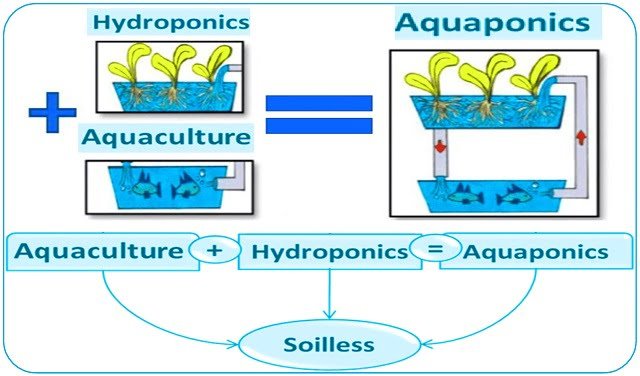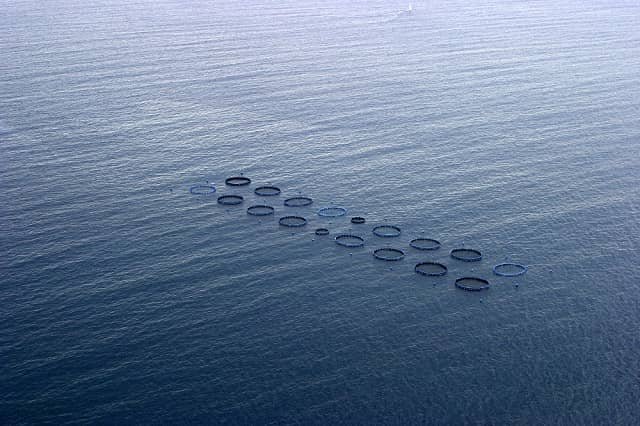Denmark – Do ICES member countries have the potential to maintain a sustainable supply of seafood for their populations? New paper suggests that a concerted effort is needed to address aquaculture’s long-term future prospects.
Growing populations and a changing climate are two of the main threats to the stability of seafood sources. To address future food security, governments have a need to understand the potential for sustainable marine aquaculture development in their jurisdictions.
ICES Working Group on Scenario Planning on Aquaculture (WGSPA) brings together experts in marine spatial analysis, economics, environmental carrying capacity and growth models, social systems, and food security to consider a series of alternate futures for the industry and their respective environmental, social, and economic consequences. In a recent publication, the group analyzed past trends within ICES countries for both farmed and wild fisheries production as well as projecting future needs and potential. The results indicate that without the development of long-term aquaculture strategies, there will likely be a deficit in production. Even with planning, the North Atlantic may not be able to meet its own seafood needs and will have to continue to increase imports from other regions.
Challenges ahead
According to lead author Halley Froehlich (University of Santa Barbara, US), “the findings really put in perspective the challenges and policy needs that lie ahead when it comes to ICES nations consumption and contribution to seafood in the future”.
“ICES member nations have been global leaders in the protection and management of wild fisheries”, the authors point out, “but to date, most of these nations have not developed robust aquaculture industries”.
What was interesting to the authors was that while all ICES countries recognized the increasingly important role of aquaculture in future seafood production, planning appears, for the most part, to be “very short term and conservative”. Alongside this lack of long-term planning, these countries have a mounting domestic seafood production deficit from consuming more seafood than they produce.
If ICES countries do not formulate long-term strategies to meet the demand at home, which the authors say could reach a “potential 7 million tonne domestic seafood deficit by 2050”, then will the global seafood production industry be able to fulfil the consumer needs? And if this deficit is to be filled through the import market, does this potentially present a greater risk of sourcing less sustainable food items in the future?
Stay Always Informed
Join our communities to instantly receive the most important news, reports, and analysis from the aquaculture industry.
Prioritization needed
Currently aquaculture receives prioritization and support in very few ICES countries but the authors point out that this “would need to become a priority to grow in ICES nations…which may not parallel the social or political will of some of the countries being discussed”. If countries are to produce more, steps need to be taken now as it not a simple case of producing more domestically but a challenge that involves “highly complex socio-economic, and cultural values around seafood”, growing populations, growing consumer demand, and the threat of climate change to the fishing and aquaculture sectors, as well as the people who depend on them.
The authors highlight that “this challenge should not be left to reactive future decisions” but instead state that, “nations must proactively prepare for the complex issues ahead”.
“ICES countries have the scientific, technical and regulatory infrastructure needed to advance environmentally responsible aquaculture”, notes Mike Rust (NOAA and Chair of the Aquaculture Steering Group), “but this paper serves as a wake-up call for a region that is already heavily dependent on imports for the majority of its seafood to start taking responsibility for its own seafood supply. Staying on the current path will continue to export the impacts to regions less able to manage them along with control over seafood quality, and the many benefits that go with producing local seafood”.
Froehlich does note that? “this research is just one slice of the puzzle”, but hopes that “it helps support better aquaculture and climate change policy and planning to come”.
In their work, WGSPA address Seafood production, Conservation and management science, and Sea and society – three of the seven interelated science priorities that support our Strategic Plan. Discover our seven interrelated scientific priorities and how our network will address them? in our Science Plan: “Marine ecosystem and sustainability science for the 2020s and beyond”.
Reference:
Halley E Froehlich, Jessica Couture, Lynne Falconer, Gesche Krause, James A Morris, Montse Perez, Grant D Stentiford, Harri Vehviläinen, Benjamin S Halpern. 2020. Mind the gap between ICES nations’ future seafood consumption and aquaculture production. ICES Journal of Marine Science, fsaa066, https://doi.org/10.1093/icesjms/fsaa066
Source: International Council for the Exploration of the Sea (ICES)
Editor at the digital magazine AquaHoy. He holds a degree in Aquaculture Biology from the National University of Santa (UNS) and a Master’s degree in Science and Innovation Management from the Polytechnic University of Valencia, with postgraduate diplomas in Business Innovation and Innovation Management. He possesses extensive experience in the aquaculture and fisheries sector, having led the Fisheries Innovation Unit of the National Program for Innovation in Fisheries and Aquaculture (PNIPA). He has served as a senior consultant in technology watch, an innovation project formulator and advisor, and a lecturer at UNS. He is a member of the Peruvian College of Biologists and was recognized by the World Aquaculture Society (WAS) in 2016 for his contribution to aquaculture.




